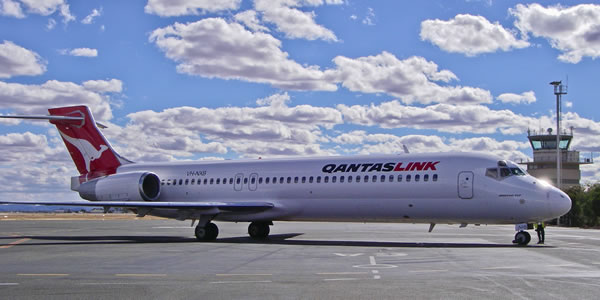Touring Australia by plane

Flying high over the Land Down Under
The 900-pound gorilla of Australian air travel is Qantas (www.qantas.com), which controls the skies for the bulk of the domestic air market through Quantaslink regional jets and prop planes.
This means there are plenty of connections, but not much choice or chance to shop around for a cheaper ticket.
The Competition
The only significant competition to Qantas is scrappy little Virgin Australia (www.virginaustralia.com)—known until 2011 as "Virgin Blue"—which helps cuts the cost of the routes it flies. (Yes, this is essentially the same as Virgin Atlantic; for arcane code-sharing reasons, Richard Branson had to create yet another, seperate airline in order to break into the Aussie market.)
You'll also see "another" no-frills airline called Jetstar Asia (www.jetstar.com), but that's basically just an arm of the Qantas octopus, fielding its own low cost carrier in a desperate attempt to squash the competition (that way Delta and United tried in the US with Song and Ted). Still, the tickets are cheaper than on flagship Qantas, so it has its uses.
The Walkabout Air Pass
One benefit of the Qantas near-monopoly is the Walkabout Pass, (www.qantas.com.au) available only to people who live outside Australia and who are buying it in conjunction with their international flight to Australia. (This used to be called the Aussie Air Pass.)
The pass covers up to six internal flights within Australia (29 cities) and/or to New Zealand (5 cities).
It works on a system of "zones"—you pay $100 for a flight within Zone 1; $170 for a flight to Zone 2; or $119 for a flight to Zone 3 (which is New Zealand).
If you're looking to bounce around to several areas (the typical tourist trail hits Sydney, Cairns for the Great Barrier Reef, and Alice Springs for the Outback and Uluru), the Walakabout Pass is probably your best bet.
Related Articles |
|
This article was by Reid Bramblett and last updated in August 2013.
All information was accurate at the time.
Copyright © 1998–2013 by Reid Bramblett. Author: Reid Bramblett.
